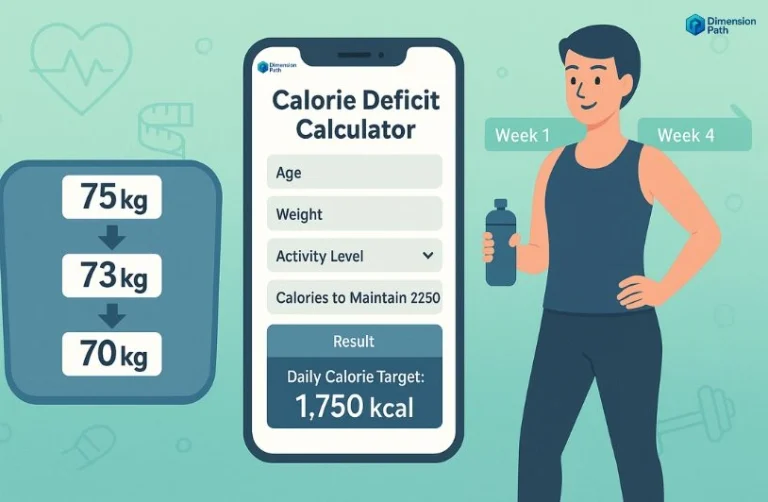CTC to In-Hand Salary Calculator: Calculate Your Real Pay
Picture this: You just received a job offer with a CTC of ₹8 lakhs per annum. Sounds impressive, right? But when your first salary hits your bank account, you’re shocked to find it’s much lower than expected. This scenario plays out for thousands of professionals every day across India, highlighting the critical need for a reliable CTC Calculator.
Understanding your actual take-home salary is not just about managing expectations—it’s about making informed career decisions, planning your finances, and negotiating better compensation packages. The gap between what companies promise and what employees actually receive can be significant, making salary calculation tools essential for every working professional.
Before diving into calculations, it’s essential to understand the CTC full form – Cost to Company – which represents the total expense an organization incurs for an employee.
What is CTC and Why Does It Matter?
CTC stands for Cost to Company, representing the total amount an organization spends on an employee annually. This figure includes not just your basic salary, but also various allowances, benefits, and employer contributions that you might not see directly in your bank account.
Many professionals make the mistake of thinking their CTC equals their monthly take-home salary multiplied by 12. This misconception can lead to poor financial planning and unrealistic expectations about disposable income.

The CTC structure typically includes:
- Basic salary (40-50% of CTC)
- House Rent Allowance (HRA)
- Dearness Allowance (DA)
- Medical allowance
- Transport allowance
- Employer’s contribution to Provident Fund (PF)
- Employer’s contribution to Employee State Insurance (ESI)
- Gratuity provisions
- Performance bonuses
- Other company-specific benefits
Understanding these components helps you evaluate job offers more accurately and negotiate better terms with employers.
How CTC Calculator Works: The Science Behind Salary Calculation
A CTC Calculator functions by breaking down your total compensation into taxable and non-taxable components, then applying relevant deductions to arrive at your actual take-home salary. The process involves several mathematical steps that consider tax regulations, statutory deductions, and company policies.

The Calculation Process
The CTC Calculator follows a systematic approach:
- Basic Salary Calculation: Usually 40-50% of your total CTC
- Allowances Addition: HRA, transport, medical, and other allowances
- Gross Salary Determination: Basic salary plus all allowances
- Tax Deduction: Based on current income tax slabs
- Statutory Deductions: PF, ESI, and professional tax
- Net Salary Calculation: Gross salary minus all deductions
This mathematical precision ensures you get accurate results every time you use a CTC Calculator.
Key Factors Affecting Your Take-Home Salary
Several variables influence how much you actually receive:
Tax Bracket: Your income tax rate depends on your annual earnings. Higher CTC means higher tax deductions, which can significantly impact your take-home amount.
City of Employment: HRA exemptions vary based on whether you work in metro or non-metro cities. Metropolitan cities offer higher HRA exemptions, affecting your taxable income.
Company Benefits: Organizations offering comprehensive benefits like medical insurance, meal coupons, or transportation can increase your effective take-home salary.
Investment Declarations: Your Section 80C investments, home loan interest, and other tax-saving instruments directly impact your monthly deductions.
Types of CTC Calculator Tools Available
Basic CTC Calculator
These simple tools provide quick estimates by inputting your CTC and basic details. They’re perfect for initial salary negotiations or quick comparisons between job offers.
Advantages:
- Easy to use
- Provides instant results
- No complex inputs required
- Free to access
Limitations:
- Limited customization options
- May not account for all allowances
- Less accurate for complex salary structures
Advanced CTC to in-hand Salary Calculator
Professional-grade calculators offer detailed breakdowns, tax optimization suggestions, and scenario modeling. These tools are ideal for financial planning and detailed salary analysis.
Features:
- Comprehensive tax calculations
- Multiple scenario modeling
- Investment impact analysis
- Detailed reports and breakdowns
Company-Specific CTC Calculator
Many organizations provide internal salary calculators that account for their specific benefit structures and policies. These tools offer the highest accuracy for current employees.
Step-by-Step Guide to Using a CTC Calculator
Step 1: Gather Your Information
Before using any CTC Calculator, collect these essential details:
- Total CTC amount
- Basic salary component
- HRA and other allowances
- Current city of employment
- Existing investments and tax-saving instruments
- Company-specific benefits
Step 2: Input Basic Details
Enter your CTC amount and select your employment city. Most CTC Calculator tools will automatically populate standard allowance percentages based on common industry practices.
Step 3: Customize Allowances
Adjust the allowance breakdowns to match your actual offer letter. Pay special attention to:
- HRA percentage (typically 40-50% of basic salary)
- Transport allowance (usually ₹1,600-₹3,200 per month)
- Medical allowance (commonly ₹1,250-₹2,500 per month)
- Special allowances (varies by company)
Step 4: Add Tax-Saving Investments
Input your planned investments under various tax-saving sections:
- Section 80C investments (up to ₹1.5 lakhs)
- Home loan interest (up to ₹2 lakhs)
- Medical insurance premiums
- Education loan interest
Step 5: Review and Analyze Results
The CTC Calculator will provide a detailed breakdown showing:
- Monthly gross salary
- Tax deductions
- Statutory deductions
- Final take-home salary
- Effective tax rate
Understanding Your CTC Calculator Results
Reading the Output
A comprehensive CTC to in-hand Salary Calculator provides multiple data points:
Monthly Breakdown: Shows your month-wise earnings and deductions, helping you plan monthly budgets effectively.
Annual Summary: Displays yearly totals for tax planning and financial goal setting.
Tax Efficiency Metrics: Indicates how much tax you’re paying as a percentage of your income and suggests optimization opportunities.
Common Discrepancies and Solutions
Sometimes, CTC Calculator results don’t match your actual salary. Here’s why this happens and how to address it:
Timing Differences: Salary processing dates, bonus distributions, and tax adjustments can cause monthly variations.
Company Policy Variations: Some organizations have unique benefit structures that standard calculators don’t account for.
Tax Regulation Changes: Updates in tax laws or rates might not be immediately reflected in all calculator tools.
Advanced Features of Modern CTC Calculator Tools
Scenario Modeling
Advanced CTC Calculator platforms allow you to model different scenarios:
Job Comparison: Compare multiple job offers side by side, accounting for different benefit structures and locations.
Salary Negotiation: Model the impact of negotiating different salary components to maximize take-home pay.
Career Growth: Project future salary scenarios based on expected increments and promotions.
Tax Optimization Suggestions
Sophisticated CTC to in-hand Salary Calculator tools provide personalized tax-saving recommendations:
Investment Recommendations: Suggest optimal investment allocations across different tax-saving instruments.
Allowance Optimization: Recommend the best mix of taxable and non-taxable allowances.
Timing Strategies: Advise on the best timing for salary restructuring and investment declarations.
Industry-Specific CTC Calculator Considerations
IT and Software Industry
Technology companies often have unique compensation structures that require specialized CTC Calculator tools:
Stock Options: Many tech companies offer ESOPs (Employee Stock Ownership Plans) that significantly impact total compensation.
Flexible Benefits: Cafeteria-style benefit plans allow employees to choose their preferred mix of benefits.
Performance Bonuses: Variable pay components based on individual and company performance metrics.
Banking and Financial Services
Financial sector compensation requires CTC Calculator tools that account for:
Regulatory Compliance: Strict guidelines on bonus structures and compensation ratios.
Performance Incentives: Commission-based earnings for sales roles.
Retirement Benefits: Enhanced provident fund contributions and pension schemes.
Manufacturing and Core Industries
Traditional industries have distinct compensation patterns:
Overtime Calculations: Factory workers often receive overtime pay that affects monthly take-home.
Shift Allowances: Additional compensation for night shifts or hazardous work conditions.
Production Bonuses: Incentives tied to production targets and quality metrics.
Common Mistakes When Using CTC Calculator
Input Errors
Incorrect CTC Entry: Double-check your offer letter to ensure you’re entering the correct annual CTC amount.
Wrong City Selection: HRA exemptions vary significantly between metros and non-metros, affecting your calculations.
Incomplete Allowance Details: Missing out on specific allowances can lead to inaccurate results.
Assumption Errors
Standard Deduction Assumptions: Not all CTC Calculator tools account for the latest standard deduction amounts.
Regional Tax Variations: Some states have additional professional taxes that might not be included in basic calculators.
Company-Specific Benefits: Unique perks like meal coupons or transportation allowances might not be considered.
Timing Misunderstandings
Financial Year Considerations: Tax calculations change based on the financial year, affecting annual projections.
Joining Date Impact: Mid-year joiners have different tax calculations than full-year employees.
Increment Timing: Salary increments during the year affect annual calculations.
CTC Calculator vs. Reality: Bridging the Gap
Why Calculators Sometimes Miss the Mark
Even the best CTC to in-hand Salary Calculator tools can’t account for every variable:
Dynamic Tax Rates: Tax slabs and rates change annually, and not all tools update immediately.
Company Policy Changes: Organizations modify their benefit structures, affecting calculations.
Personal Circumstances: Individual tax situations vary based on investments, family status, and other factors.
Improving Calculator Accuracy
To get the most accurate results from your CTC Calculator:
Regular Updates: Use recently updated tools that reflect current tax laws and regulations.
Detailed Inputs: Provide comprehensive information about your specific salary structure and benefits.
Professional Consultation: For complex situations, consider consulting with tax professionals or financial advisors.
Future of CTC Calculator Technology
AI-Powered Calculations
Modern CTC Calculator tools are incorporating artificial intelligence to provide more accurate and personalized results:
Machine Learning: Systems learn from user inputs and outcomes to improve accuracy over time.
Predictive Analytics: Advanced tools can forecast salary growth and tax implications for career planning.
Personalized Recommendations: AI algorithms provide customized tax-saving and investment advice.
Integration with Financial Planning
Next-generation CTC to in-hand Salary Calculator platforms offer comprehensive financial planning features:
Goal-Based Planning: Link salary calculations to specific financial goals like home purchase or retirement.
Investment Tracking: Monitor how salary changes affect your investment portfolio and financial targets.
Real-Time Updates: Receive alerts when tax laws or company policies change, affecting your calculations.
Maximizing Your Take-Home Salary
Strategic Salary Negotiation
Use CTC Calculator insights to negotiate better compensation packages:
Component Optimization: Request a higher percentage of tax-free allowances to reduce taxable income.
Benefit Maximization: Negotiate for company-provided benefits that reduce your personal expenses.
Timing Strategies: Plan salary increments and bonuses to optimize tax implications.
Tax-Efficient Salary Structuring
Work with your HR department to structure your salary optimally:
Flexible Benefit Plans: Take advantage of cafeteria-style benefit options when available.
Allowance Maximization: Ensure you’re claiming all eligible allowances and exemptions.
Investment Coordination: Align your salary structure with your investment and tax-saving strategy.
Salary Comparison Table
| CTC Range | Metro Take-Home (%) | Non-Metro Take-Home (%) | Tax Burden (%) |
|---|---|---|---|
| ₹3-5 Lakhs | 85-90% | 82-87% | 5-10% |
| ₹5-8 Lakhs | 80-85% | 77-82% | 10-15% |
| ₹8-12 Lakhs | 75-80% | 72-77% | 15-20% |
| ₹12-20 Lakhs | 70-75% | 67-72% | 20-25% |
| ₹20+ Lakhs | 65-70% | 62-67% | 25-30% |
Tax Saving Instruments Impact
| Investment Type | Section | Maximum Limit | Tax Saving | Take-Home Impact |
|---|---|---|---|---|
| PPF | 80C | ₹1,50,000 | ₹46,800 | +₹3,900/month |
| ELSS Mutual Funds | 80C | ₹1,50,000 | ₹46,800 | +₹3,900/month |
| Home Loan Interest | 24 | ₹2,00,000 | ₹62,400 | +₹5,200/month |
| Health Insurance | 80D | ₹25,000 | ₹7,800 | +₹650/month |
| Education Loan | 80E | No Limit | Variable | Variable |
Conclusion
Understanding your true earning potential requires more than just looking at your CTC figure. A reliable CTC Calculator serves as your financial compass, helping you navigate the complex landscape of Indian salary structures, tax implications, and take-home calculations.
Whether you’re evaluating a new job offer, planning your monthly budget, or optimizing your tax strategy, these tools provide the clarity you need to make informed decisions. Remember that while CTC Calculator tools are highly accurate, they’re most effective when you provide detailed and accurate inputs about your specific situation.
The key to maximizing your financial potential lies not just in earning more, but in understanding exactly how much you’re taking home and optimizing every component of your compensation package. With the right CTC to in-hand Salary Calculator and a clear understanding of your salary structure, you’re well-equipped to make the most of your career earnings.
Frequently Asked Questions
Q: How accurate are online CTC calculators?
A: Online CTC Calculator tools are generally 90-95% accurate for standard salary structures. However, accuracy depends on the tool’s update frequency and your specific company policies.
Q: Why is my actual salary different from the calculator result?
A: Differences can occur due to company-specific deductions, timing of salary processing, bonus distributions, or unique benefit structures not accounted for in the CTC Calculator.
Q: Can I use a CTC calculator for freelance income?
A: Traditional CTC Calculator tools are designed for salaried employees. Freelancers need different calculators that account for business expenses and quarterly tax payments.
Q: How often should I recalculate my CTC?
A: Use a CTC to in-hand Salary Calculator whenever you receive a salary increment, change jobs, or when tax laws change (typically annually).
Q: Do CTC calculators account for gratuity?
A: Most CTC Calculator tools include gratuity as part of the CTC but don’t show it in monthly calculations since it’s paid only upon leaving the company.
Q: Can I optimize my salary structure based on calculator results?
A: Yes, CTC Calculator results can help you identify opportunities to restructure your salary for better tax efficiency, but implement changes only with HR approval.
Q: What is the CTC full form?
A: The CTC full form is ‘Cost to Company.’ It represents the total annual expenditure an organization makes on an employee, including salary, benefits, allowances, and statutory contributions.”
👉 Also, check out our latest guide on In Hand Salary Calculator only at Dimensions Path!
👉 Learn everything about CTC and how it affects your take-home salary.
CTC & Salary Calculator







